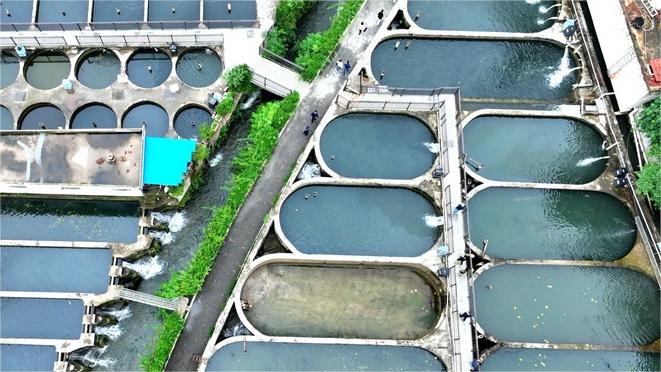Understanding sand movement to safeguard NW China's railway artery
LANZHOU, June 12 (Xinhua) -- Chinese scientists are endeavoring to safeguard the smooth and safe operation of a high-speed railway in the windy Gobi Desert by better understanding the movement of sand.
New progress has been made in revealing the sediment movement by strong winds along the Lanzhou-Xinjiang high-speed railway, one of northwest China's railway arteries, according to the Northwest Institute of Eco-Environment and Resources (NIEER) under the Chinese Academy of Sciences.
The new study is of practical importance to the safe operation of such an important railway artery. Moreover, it could serve as a theoretical foundation for preventing and managing eolian disasters along this railway, said NIEER researcher Liu Benli.
The 1,776-km high-speed railway links Urumqi, capital of northwest China's Xinjiang Uygur Autonomous Region, with Gansu Province's capital Lanzhou. It spans Xinjiang and the provinces of Qinghai and Gansu in the country's vast northwestern region.
It is also the country's first high-speed railway through four major wind areas of the Gobi Desert.
Under strong wind conditions over vast Gobi surfaces, eolian transportation can cause significant environmental problems and infrastructural damage. However, scientific understanding of the underlying mechanisms and dynamics of this process in the Gobi region remains limited, according to Liu.
Therefore, it is of practical and academic importance to investigate and better understand the eolian transportation over the Gobi surface along this railway.
The NIEER researchers selected one of the windy areas along the railway to carry out field observation on the transportation process of wind-blown sand on the Gobi surface.
The study results indicate that sand transportation heights can reach 9 meters in this region, with the saltation layer approximately three to six times higher than that of other gravel deserts.
The study provides insight into the wind-blown sand movement mechanism over the surface of Gobi Desert under strong winds, according to NIEER associate researcher Wang Tao.
It also proposes suggestions to current wind-blown sand protection system of this railway.
According to the study results, the annual eolian transported quantity recorded in this region exceeds that of most deserts worldwide. Notably, fine sand and total suspended particulates contributed to around 90 percent of the sediment deposited on railway tracks and drawn in by passing trains.
"To control transportation of these fine particles, we propose increasing the height of sand-blocking fences within the current railway wind-blown sand protection system from two to three meters," said Wang.
Simultaneously, anthropogenic damage to the Gobi surface should be minimized to reduce excessive dust release, he added.
The results of the study have been published in the journal Land Degradation & Development.
Photos
Related Stories
- China-Kyrgyzstan-Uzbekistan railway to bring tangible benefits to participants, whole region, experts say
- China's railway investment up 10.8 pct in first 5 months
- Direct rail link with China top priority at Spanish trade fair talks
- China's railways to handle 74 mln passenger trips during Dragon Boat Festival
- Four high-speed rail lines to apply flexible pricing mechanism
Copyright © 2024 People's Daily Online. All Rights Reserved.









